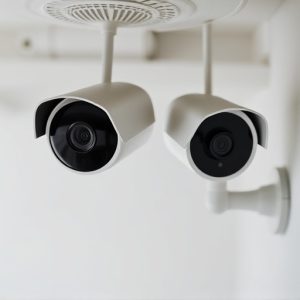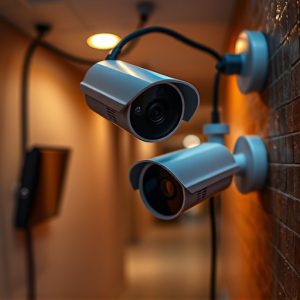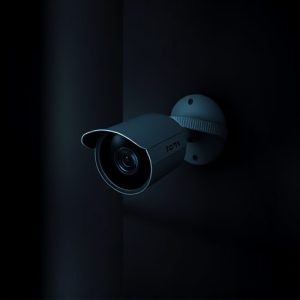Maximizing Office Safety: A Guide to High-Quality Hidden Security Cameras
High-quality hidden security cameras are essential for enhancing office security with minimal disrup…….
High-quality hidden security cameras are essential for enhancing office security with minimal disruption to ambiance and daily operations. These advanced systems offer inconspicuous integration into office environments, delivering superior video quality, robust night vision, and intelligent motion detection for 24/7 surveillance. They are crucial for capturing high-resolution footage in any lighting condition, ensuring businesses can optimize storage while maintaining effective monitoring. When selecting these cameras, it's vital to consider resolution, field of view, data storage capabilities, and compatibility with existing security systems, along with professional installation to maintain their hidden nature without compromising performance. These cameras come equipped with cutting-edge encryption and secure transmission protocols to protect against digital breaches. They are a tailored solution for businesses aiming for comprehensive office security that respects both operational needs and legal privacy standards, striking a balance between surveillance and employee privacy rights. Businesses must navigate the complex landscape of local surveillance and privacy laws when implementing these cameras, ensuring transparency with employees through clear surveillance policies, and upholding ethical surveillance practices to foster a secure and trusting workplace environment.
navigating the complexities of modern office security necessitates strategic implementation of surveillance solutions. High-quality hidden security cameras are pivotal in safeguarding workplace environments without overtly compromising aesthetics or employee privacy. This article delves into the intricacies of selecting, installing, and managing discreet office surveillance systems. From pinpointing key features to understanding legal frameworks, this guide serves as an essential resource for businesses aiming to maintain a secure, professional setting.
Understanding High Quality Hidden Security Cameras for Offices: A Comprehensive Guide
High-quality hidden security cameras are a critical component for safeguarding office environments without compromising on aesthetics or workflow. These discreet surveillance tools are meticulously designed to blend seamlessly with their surroundings, providing undetectable monitoring while capturing pristine video footage. The technological advancements in these cameras ensure that they offer superior resolution and night vision capabilities, enabling clear visuals at all times. Businesses can rest assured knowing that their assets, confidential information, and personnel are under the watchful eye of these sophisticated devices, which come equipped with state-of-the-art motion detection and intelligent recording features to maximize storage efficiency without missing a beat.
Choosing high-quality hidden security cameras requires careful consideration of factors such as resolution, field of view, storage capacity, and compatibility with existing security systems. The integration process is designed to be as unobtrusive as the cameras themselves, with professional installation ensuring that these devices remain undetected while functioning optimally. Additionally, these cameras often feature advanced encryption and secure data transmission to protect against cyber threats, making them a robust solution for modern office security needs. With a range of models available, tailored to different office sizes and security requirements, businesses can select the perfect high-quality hidden security camera system to suit their unique operational demands.
Key Features to Look for in Discreet Office Surveillance Systems
When considering the deployment of hidden security cameras in an office environment, prioritizing high quality imagery is paramount for effective surveillance. Cameras equipped with high-resolution sensors and advanced infrared capabilities ensure clear footage even in low-light conditions, which is crucial for capturing sharp visuals throughout the day and night. Additionally, these devices should be compact and unobtrusive, blending seamlessly into the office decor to maintain a professional ambiance without drawing attention. Opt for models with wide-angle views to cover larger areas without sacrificing detail, and those that offer remote viewing capabilities via smartphone or computer for real-time monitoring and immediate incident response. Privacy filters can also enhance security by preventing onlookers from seeing the display in public settings. Furthermore, consider cameras with motion detection and intelligent alerts to minimize data storage needs and focus on critical areas. Ensuring the cameras are compatible with existing security systems and can be installed without significant alterations to office infrastructure will facilitate a smooth integration into your current setup. Always verify that the cameras you select come from reputable manufacturers, offer reliable customer support, and comply with all local privacy and surveillance laws to ensure both your security needs and legal obligations are met.
Best Practices for Installing and Positioning Hidden Cameras in the Workplace
When integrating high quality hidden security cameras into the workplace, it’s crucial to prioritize strategic placement and adherence to privacy laws. A thoughtful installation plan should consider blind spots and vantage points for optimal coverage. Cameras ought to be positioned discreetly without compromising their effectiveness; they should capture clear images while respecting employees’ privacy. Ensure that the cameras are installed at a height where they have an unobstructed view, typically around seven to nine feet off the ground, to avoid being easily noticed or tampered with. Additionally, camera angles should be adjusted to monitor high-traffic areas like entrances and exits, as well as sensitive locations such as server rooms or confidential document storage areas without intruding on personal spaces. It’s important to ensure that all installations comply with local regulations regarding surveillance and are communicated transparently to staff to maintain trust and a positive work environment.
Furthermore, the chosen cameras should offer high-resolution recording capabilities and be equipped with features such as motion detection and night vision to provide comprehensive monitoring around the clock. Regular maintenance checks should be scheduled to ensure that the cameras remain operational and aligned with best practices for data security and storage. By carefully considering the placement and functionality of high quality hidden security cameras, businesses can enhance security without overstepping boundaries or creating an atmosphere of distrust. This balanced approach not only protects assets but also respects the rights and expectations of employees within the workplace.
Legal Considerations and Ethical Implications of Using Hidden Security Cameras in Offices
When implementing high-quality hidden security cameras in offices, it is imperative to navigate the complex landscape of legal and ethical considerations. Legally, businesses must comply with local, state, and federal laws that govern surveillance and privacy rights. These laws vary by jurisdiction, and failure to adhere to them can result in significant legal challenges and penalties. Employers should first establish a clear policy on monitoring, ensuring that all employees are aware of where cameras are located and the reasons for their use. The policy should also outline the scope of surveillance, data storage protocols, and who has access to recorded footage.
From an ethical standpoint, it is crucial to balance the need for security with respecting employee privacy. High-quality hidden cameras should only be used in common areas where an expectation of privacy is not reasonably expected, and their presence must be visible to inform employees that they may be under observation. Transparency about surveillance practices fosters trust and can prevent unfounded suspicions or concerns about ‘big brother’ behavior. Additionally, businesses must ensure that the footage captured by these cameras is used solely for legitimate purposes such as security and incident prevention, rather than for invasive or unwarranted monitoring. By carefully considering both legal requirements and ethical responsibilities, companies can responsibly integrate high-quality hidden security cameras into their office environments to enhance safety without compromising the rights of their employees.


